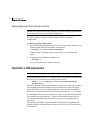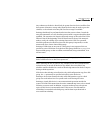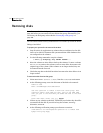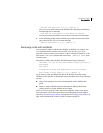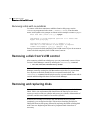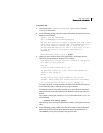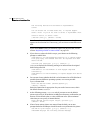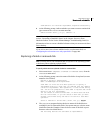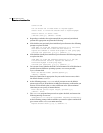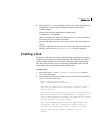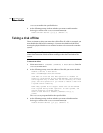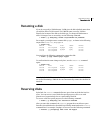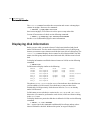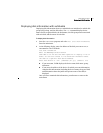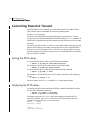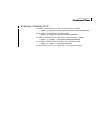
116 Administering disks
Removing and replacing disks
c0t1d0 c1t1d0
You can choose one of these disks to replace mydg02.
Choose "none" to initialize another disk to replace mydg02.
Choose a device, or select "none"
[<device>,none,q,?] (default: c0t1d0)
4 Depending on whether the replacement disk was previously initialized,
perform the appropriate step from the following:
◆ If the disk has not previously been initialized, press Return at the following
prompt to replace the disk:
VxVM INFO V-5-2-378 The requested operation is to initialize
disk device c0t1d0 and to then use that device to
replace the removed or failed disk mydg02 in disk group mydg.
Continue with operation? [y,n,q,?] (default: y)
◆
If the disk has already been initialized, press Return at the following prompt
to replace the disk:
VxVM INFO V-5-2-382 The requested operation is to use the
initialized device c0t1d0 to replace the removed or
failed disk mydg02 in disk group mydg.
Continue with operation? [y,n,q,?] (default: y)
5 You can now choose whether the disk is to be formatted as a CDS disk that is
portable between different operating systems, or as a non-portable
hpdisk-format disk:
Enter the desired format [cdsdisk,hpdisk,q,?]
(default: cdsdisk)
Enter the format that is appropriate for your needs. In most cases, this is
the default format, cdsdisk.
6 At the following prompt,
vxdiskadm asks if you want to use the default
private region size of 32768 blocks (32 MB). Press Return to confirm that you
want to use the default value, or enter a different value. (The maximum
value that you can specify is 524288 blocks.)
Enter desired private region length [<privlen>,q,?]
(default: 32768)
7 The vxdiskadm program then proceeds to replace the disk, and returns the
following message on success:
VxVM NOTICE V-5-2-158 Disk replacement completed successfully.
At the following prompt, indicate whether you want to replace another disk
(y) or return to the vxdiskadm main menu (n):
Replace another disk? [y,n,q,?] (default: n)



